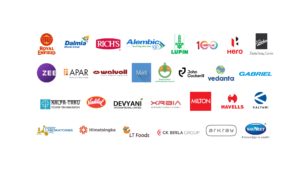SAP TM and SAP EWM Integration: A Game-Changer in Logistics : In the world of supply chain management, efficiency and synchronization are paramount. In this context, SAP (Systems, Applications, and Products) offers two powerful tools, SAP TM (Transportation Management) and SAP EWM (Extended Warehouse Management), that may seem distinct in their functions but are, in fact, deeply interwoven. These two systems seamlessly integrate to provide businesses with a comprehensive solution for managing their logistics and warehouse operations. Let’s delve into the relationship between SAP TM and SAP EWM and understand how their synergy creates a harmonious and efficient supply chain ecosystem.
Integration: The Backbone of Efficiency
The key to the successful relationship between SAP TM and SAP EWM is integration. These systems are designed to share critical information, facilitating effective coordination between transportation management and warehouse operations. Transportation orders, delivery schedules, and real-time inventory status can be effortlessly exchanged between the two platforms. This integration ensures that shipping schedules align with warehouse activities, resulting in efficient order fulfillment and timely dispatches.
Order Fulfillment: A Perfect Synchronization
SAP TM and SAP EWM work in tandem to accelerate the order fulfillment process. SAP TM takes the reins in transportation planning, carrier selection, and shipment scheduling, aligning these tasks with customer preferences and delivery requirements. Meanwhile, SAP EWM manages the nitty-gritty of warehouse operations, including picking, packing, shipping, and inventory management. By synchronizing transportation plans with storage activities, these systems make order fulfillment appear seamless. Customers receive their orders promptly, thanks to this well-coordinated dance between SAP TM and SAP EWM.
End-to-End Visibility: The Power of Transparency
The combined capabilities of SAP TM and SAP EWM offer businesses a panoramic view of their supply chain operations, from inception to the final delivery. The real-time tracking and monitoring of shipments, stock levels, and order status empower organizations with a level of transparency that can be a game-changer. This end-to-end visibility extends across transportation planning and execution to warehouse operations. When businesses possess complete insight into their supply chains, they can preemptively identify and address issues, make informed strategic decisions, and enhance productivity.
Optimization and Efficiency: Maximizing Resources
One of the most significant advantages of merging SAP TM and SAP EWM is the optimization of supply chain processes and the boost in operational efficiency. The integration between SAP TM and SAP EWM streamlines processes and optimizes resource allocation, ultimately benefiting customers. Organizations can save on transportation costs, reduce order processing times, and enhance overall operational efficiency by aligning transportation planning with warehouse operations. This synergy allows businesses to extract maximum value from their supply chain management systems.
In conclusion, the relationship between SAP TM and SAP EWM is one of collaboration and synergy, where the sum is indeed greater than its parts. These two systems seamlessly integrate, offering a holistic approach to supply chain management. Through integration, they ensure efficient coordination, synchronize order fulfillment, provide end-to-end visibility, and optimize resource utilization. Businesses that harness the power of SAP TM and SAP EWM stand to gain a competitive edge in today’s dynamic and demanding marketplace. By weaving together transportation management and warehouse operations, these systems create a symphony of efficiency and effectiveness in the world of supply chain management. Read more.


 RECOGNISED WORLD OVER SOLUTIONS
RECOGNISED WORLD OVER SOLUTIONS
 Find out how BSC GLOBAL digitally transformed P2P cycle for worlds renowned brand in Automobile
Find out how BSC GLOBAL digitally transformed P2P cycle for worlds renowned brand in Automobile









